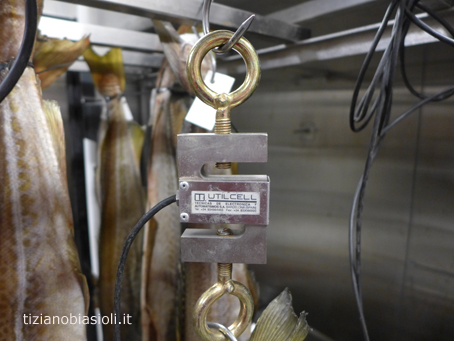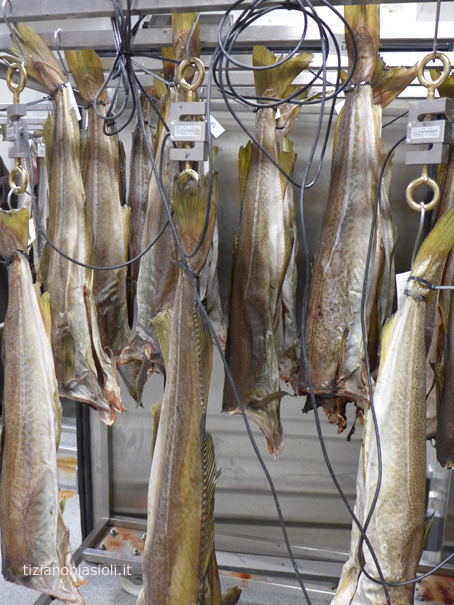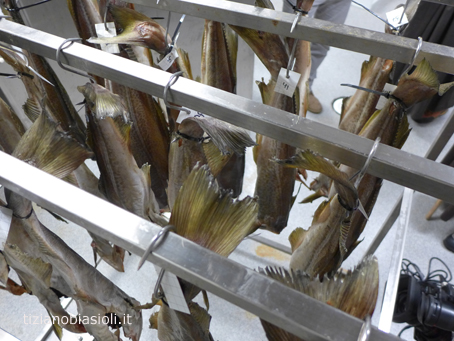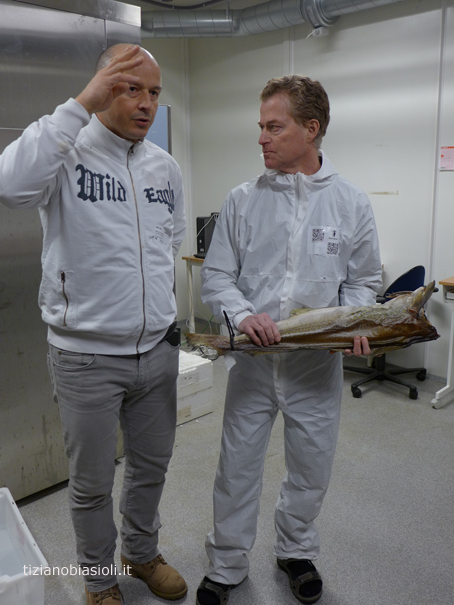| Reportage sulla visita al laboratorio innovativo indoor di stoccafisso Nofima di Oslo realizzato da Tiziano Biasioli e Vasilisa Razdayvodina |
|
 |
|
Visita
al laboratorio Nofima Visit to Nofima laboratory Oslo - Norway |
 |
|
|
|
La produzione indoor di
stoccafisso
Nordahl Anthonisen di
Athena Seafoods AS di Bergen ebbe l'idea
iniziale:
Per questo motivo ha
coinvolto in un progetto UE importanti
aziende e istituti di ricerca europei,
insieme al ricercatore John-Erik Haugen.
I risultati della ricerca dimostrano che
è possibile produrre pesce essiccato
all'interno, partendo dal merluzzo
fresco senza teste ed intestini: la
materia prima utilizzata per la
produzione tradizionale esterna dello
stoccafisso.
Oltre all'utilizzo di materie prime tradizionali, il lavoro di sviluppo riproduce le condizioni meteo ottimali per l'essiccazione tradizionale all'aperto. Mentre l'essiccamento esterno tradizionale su rastrelliere richiede circa quattro mesi, Haugen ha bisogno di meno di un mese per la produzione di pesce di alta qualità essiccato indoor. Il progetto europeo ha elaborato anche calcoli di costi-benefici e questi dimostrano che il nuovo metodo è economicamente sostenibile. L'azienda alimentare italiana Il Ceppo ha 80 anni di esperienza nel settore baccalà/stoccafisso. Il personale della società ha partecipato al progetto e ha valutati sia l'aspetto sia l'odore del pesce essiccato al chiuso. Il Ceppo ha anche effettuato indagini presso i consumatori in Italia; sono state effettuate “prove al buio” di pesce essiccato al chiuso e all'aperto, facendo assaggiare piatti della tradizione italiana.
"Questi test iniziali
indicano che il prodotto sperimentale è
di alta qualità che i piatti a base di
stoccafisso essiccato indoor sono
altrettanto buoni come quelli a base di
prodotti tradizionali all'aperto" dice
Haugen. Un brevetto è stato applicato per proteggere il nuovo processo.
Nofima e Athena Seafoods
stanno lavorando insieme per sviluppare
ulteriormente il progetto, in vista
della sua commercializzazione. |
|
|
|
|
|
|
|
Thanks to John-Erik
Haugen, PhD, Senior researcher Nofima AS, Post Box 210, NO-1431 Aas, Address: Osloveien 1, Aas www.nofima.no
|
|
|
 |
 |
|
Riccardo Boscolo titolare della Gastronomia Il Ceppo di Vicenza visita l'impianto di essicazione indoor accompagnato da John-Erik Haugen - Nofima Riccardo Boscolo owner of Gastronomy Il Ceppo of Vicenza visit the laboratory accompanied by John-Erik Haugen - Nofima |

|

|
|
|
|
|
|
|
Hanno visitato il laboratorio anche i due frati della Confraternita dello Stofiss dei Frati di Rovereto: il Priore Fracasso e fra' Dolcino. Visited the laboratory Nofima also the two brothers of the Confraternita dello Stofiss dei Frati di Rovereto: the Fracasso Prior and fra' Dolcino |

|

|
|
|
|
Vedi anche il nostro magazine: www.tizianobiasioli.it e i nostri FB e siti |
|
|













































